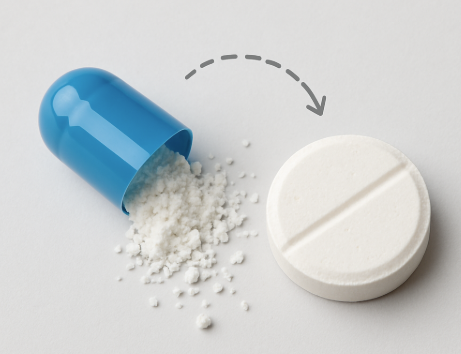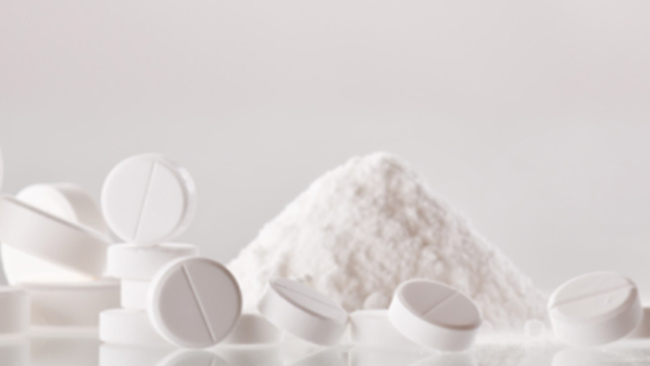Simplifying Reformulation: A Capsule-to-Tablet Case Study

Pharmaceutical companies often begin drug development with capsules due to their cost-effectiveness and ease of formulation during early-stage clinical trials. However, while capsules provide initial savings, they can lead to higher production costs upon commercialization. As a result, many companies transition to tablet formulations benefiting from improved efficiency, cost reduction, and enhanced patient compliance.
Common Challenges in Reformulation
Transitioning from a capsule to a tablet presents several challenges that need to be addressed to maintain product quality and performance:
- Powder Flow: Ensuring uniform powder flow is essential for consistent tablet weight and content uniformity.
- Content Uniformity: Active Pharmaceutical Ingredients (APIs) with poor flow properties may lead to dose variability.
- API Physical Characteristics: Particle size, shape, and moisture sensitivity can impact compressibility and dissolution.
- Moisture Management: Some APIs and excipients are moisture-sensitive, affecting stability.
- Scale-Up: Transitioning to large-scale manufacturing without compromising quality requires careful formulation adjustments.
Streamlining Formulation from the Start
To streamline the switch from capsules to tablets, it is beneficial to start with a capsule formulation that can be readily adapted for tableting later on. A blend of Starch 1500 and Microcrystalline Cellulose (MCC) facilitates this process, enabling a seamless shift with minimal adjustments.
Case Study: Consistent Dissolution Profiles
A study demonstrated that using a Starch 1500®: MCC blend in both capsule and tablet formulations resulted in unchanged dissolution profiles, indicating that reformulation did not compromise drug release characteristics. This consistency is crucial for regulatory approval and patient efficacy.
Six Added Benefits of a Starch 1500 : MCC Blend
Formulation Recommendations
A structured approach to formulation development ensures a successful transition.
- Starting Ratio: A 1:1 ratio of MCC to Starch 1500 is recommended for initial formulation.
- Higher API Load: For APIs with poor compressibility, increase MCC content to a 2:1 ratio.
- Minimum Starch Content: Ensure at least 10% Starch 1500 to maintain adequate disintegration properties.
This strategy provides process flexibility while reducing the risk of reformulation challenges. Additionally, it supports granulation techniques like high shear and fluid bed granulation without the need for additional excipients, thereby avoiding extensive stability studies and regulatory hurdles.
Conclusion
A Starch 1500 and MCC blend provides a well-balanced approach to tablet formulation, offering advantages in compressibility, disintegration, flow properties, and scalability. This formulation strategy minimizes the complexity of transitioning from capsules to tablets, allowing pharmaceutical companies to achieve cost savings, regulatory compliance, and manufacturing efficiency with ease.
.png?width=1195&height=598&name=Gabapentin%20and%20Theophylline%20Graphs%20(1).png)



.png)
